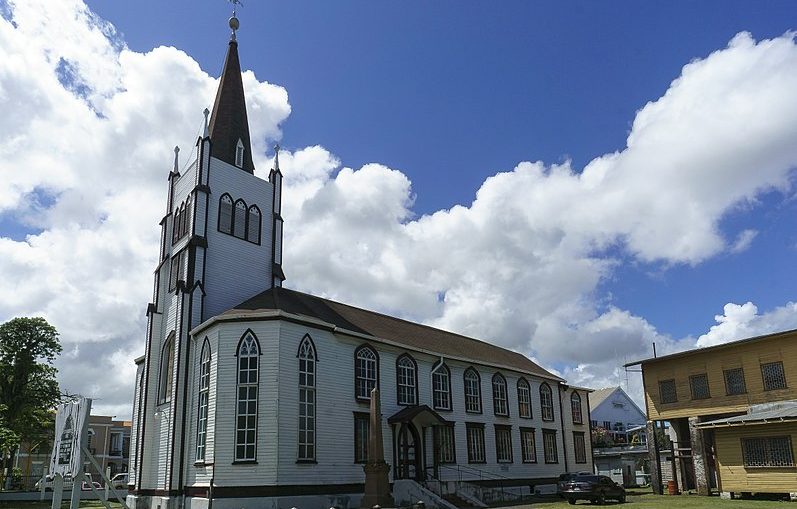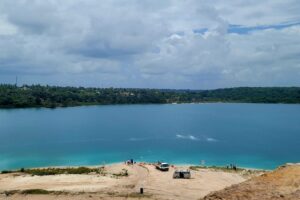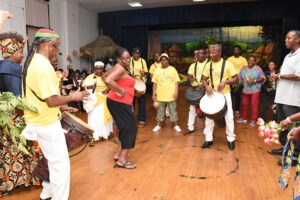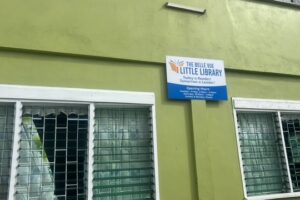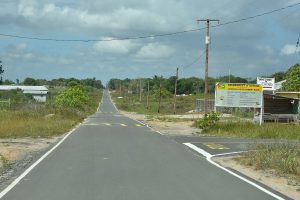Upon entering the bustling Stabroek Market Square you cannot miss this fantastic piece of gothic architecture that stands tall at the corner of Brickdam, Georgetown. It is located opposite the Magistrate’s Court and is one of Guyana’s oldest wooden, religious structures.
Fun Fact: The word ‘Kirk’ is a Scottish word for church.
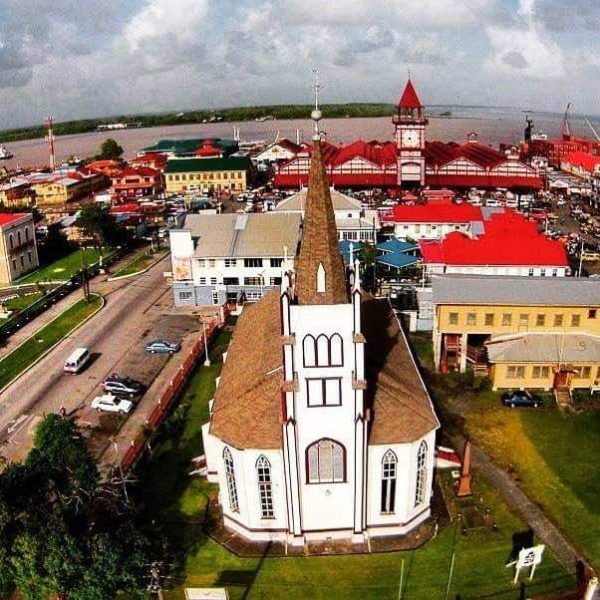
Image of St. Andrew’s Kirk. Photo source: St. Andrew’s Kirk-Presbyterian Church- Facebook.com
The Establishment of Saint Andrew’s Kirk
Governor Henry William Bentick, under the Dutch regime, laid the foundation of this church on 12th August, 1811. The construction of the building was approved during the Dutch regime in 1784 but was later built after the British would have taken hold of Demerara in 1803. The Dutch got right to work on their project, obtaining well-burned bricks and matured greenheart for the building of their chapel. In 1812, many church services were held despite the construction still in progress. The Europeans granted the slaves permission to worship within the church after the Minister, Reverend Archibald Browne was concencered about their well being and overall happiness. By 1813, budgetary limitations were hindering the church’s development and construction was halted.
Fun Fact – The architect by the name of Issac Hadfield designed the church.
How Did They Overcome Their Financial Struggles?
The construction of this massive, wooden building took a financial toll on the Dutch, particularly the architect Issac Hadfield who had been hired to complete the joinery of the building. Hadfield claimed to have been owed a sum of money and could not proceed with the project. The Dutch would have made the decision to consider seeking the help from the Scottish population after gaining knowledge about them being interested in establishing a church within the Demerara District. Luckily, this was indeed a great opportunity for the Scottish and they came to a joint agreement with the Dutch and took the establishment under their wings.
The Completion of The Church
After the Scottish and Dutch came to an agreement of sharing the expenses they contracted Joseph Hadfield who gave them an estimated cost for the completion of the building. After several grueling months and many alterations to the structure it was finally completed o and declared opened on 27th September, 1818 by Reverend Archibald Browne. In April 1871 the Dutch handed over the church to Reverend Thomas Slater, it was after this ownership that the church was renamed “Saint Andrew’s Kirk”. The earlier designs of the building were meant to be along the lines of the Romanesque Revival Architecture (known as Norman in England) rather than the Gothic style that we know today.
Fun Fact – Romanesque architecture is known by its massive quality, thick walls, round arches, sturdy pillars, barrel vaults, large towers and decorative arcading.
Physical Description of Saint Andrew’s Kirk
The body of the building, being 70 feet by 50, two stories high, the upper one would form a spacious airy and elegant court, being in the center about 22 feet high, and 26 feet wide with a gallery of 12 feet on either side.
Fun Fact – The Gothic architecture is traced to the mid-12th century. Gothic architecture was mainly intended to make the churches look like heaven.
The Church Now
As one would expect the church is not in its original state from over 2 centuries ago; many changes have been made since. The church went through a renovation in 2003 which would have not happened if it was for the choir. The church was originally meant to be demolished in order for a more modern, concrete edifice to replace it. The last event held by the church took place in 2018 which welcomed persons to celebrate its 200th anniversary.
Fun fact: A historic service was held to mark Emancipation on 1 August 1838, which was attended by then Governor Sir Henry Light and many Afro-Guyanese.
The Saint Andrew’s Kirk is a marvelous piece of architecture which preserves a piece of the country’s history within its thick, balata, pine walls.
References
- https://guyanasouthamerica.gy/tour/landmarks-in-guyana/st-andrews-kirk-georgetown/
- https://www.landofsixpeoples.com/news404/ns4120250.htm
- https://www.kaieteurnewsonline.com/2013/08/04/tracing-the-history-of-st-andrews-kirk/

